The term “Sport” is now absolutely meaningless when it comes to trim levels and model names. It could mean a cut-down, more budget-friendly version of something like the Range Rover Sport, it could be a base model, or it could be a slightly sporty appearance package that might have some mechanical changes. However, every so often, sport means sport. It sure did with the second-generation Ford Fusion Sport, which stealthily packed twin-turbo power.
Flash back to 2016, and the midsize sedan segment seems to be hanging in there. The two Japanese juggernauts known as the Toyota Camry and Honda Accord were obviously present, but there was so much more than that. Mazda would sell you the post-Ford-breakup thirst trap that was the third-generation Mazda 6, and Chrysler would sell you a 200 with a V6 and all-wheel-drive. Meanwhile, Volkswagen offered a VR6-powered Passat, and the second-generation Ford Fusion made waves for looking a bit like an Aston Martin, assuming it was a foggy night and you’d had eleven units of fernet.
However, the Fusion also had something that most midsize sedans didn’t have, and that was a platform that could accept a genuinely astonishing array of engines. Dropping the boosted V6 from a Lincoln MKX into a mainstream family sedan would likely create, if we consult the Viagra Boys rubric, a sport. A Ford Fusion Sport, to be specific.

So, what does the 2.7-liter twin-turbocharged V6 make? A stout 325 horsepower and a whopping 380 lb.-ft. of torque, enough to blow the entire mainstream midsize sedan segment into the middle of last week. Granted, the only transmission offered was a six-speed automatic, but all-wheel drive still helped the Fusion Sport to scoot from zero-to-60 mph in 5.1 seconds during Car and Driver instrumented testing. Plus, there was a little more to the Sport moniker than just power, as the magazine wrote:
Push the S button in the center of the new-for-’17 dial-operated shifter to sharpen the Sport’s reflexes. It tautens the adaptive-damping system, increases steering effort, quickens throttle response, and amps up the artificially enhanced engine sounds. The S button also engages a more aggressive shift program from the six-speed automatic transmission (a heavier-duty unit than in other Fusions) and gives you more control through the standard paddle shifters. It upshifts automatically at 6000 rpm no matter what you do with the paddles, but it will hold gears through corners and rev-match downshifts under braking. None of this changed the measurable on-track performance, but it does make driving the car more entertaining. The dampers, especially, did a great job of supporting aggressive assaults on curving roads while maintaining a ride quality that wouldn’t alarm your grandmother. Adaptive dampers are all but commonplace in pricier, near-luxury sedans and many crossover-utility vehicles but are overdue to trickle into the mass market.
Good stuff, but keep in mind that the Fusion Sport wasn’t the spiritual successor to the SVT Contour. Although the pothole-detecting suspension and added combustion fury worked wonders, we’re still looking at a 4,128-pound midsize sedan with electric power steering, a six-speed automatic, and open differentials. It’s not badged as an ST, it’s just well-damped and capable of running away from the rest of the midsize sedan pack. You know what? In daily driving, that’s probably enough.

Then, just two years into the production run of the second-generation Fusion Sport, Ford dropped a bombshell. It was going to discontinue every sedan it sold in North America, and niche offerings were low-hanging fruit. As a result, the Fusion Sport bowed out after the 2019 model year, meaning this sleeper was only around for a rather limited time.
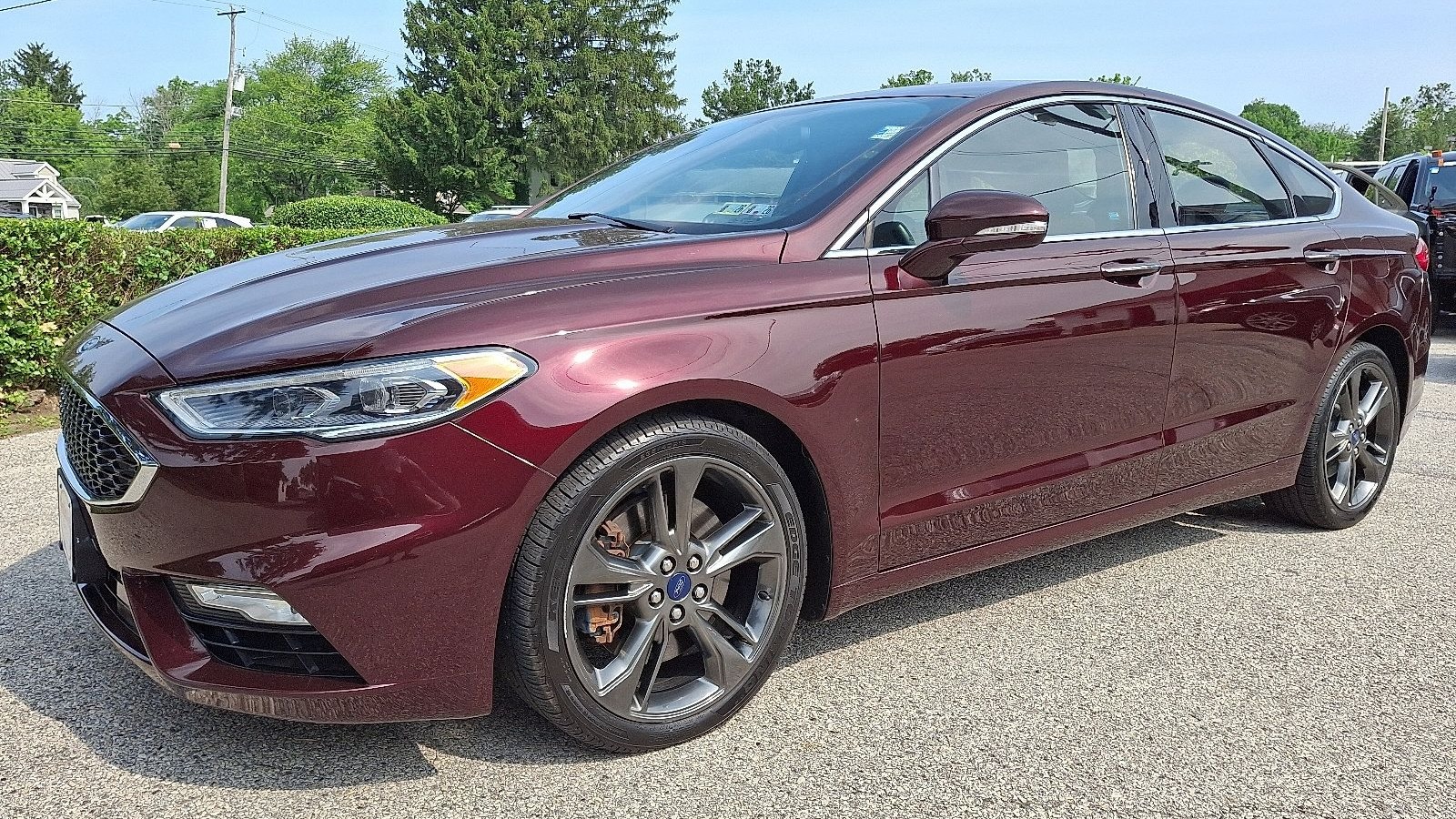
However, perhaps due to flying under the radar, you certainly won’t have to pay an arm and a leg if you’re shopping for a Fusion Sport in 2025. Want a low-mileage example in an actual color? This Burgundy Velvet 2017 example might be what you’re looking for. It’s up for sale in Pennsylvania with 63,365 miles on the clock for $17,282, has a clean history report, and is a perfectly sensible second-hand buy with a bit of a wild side.
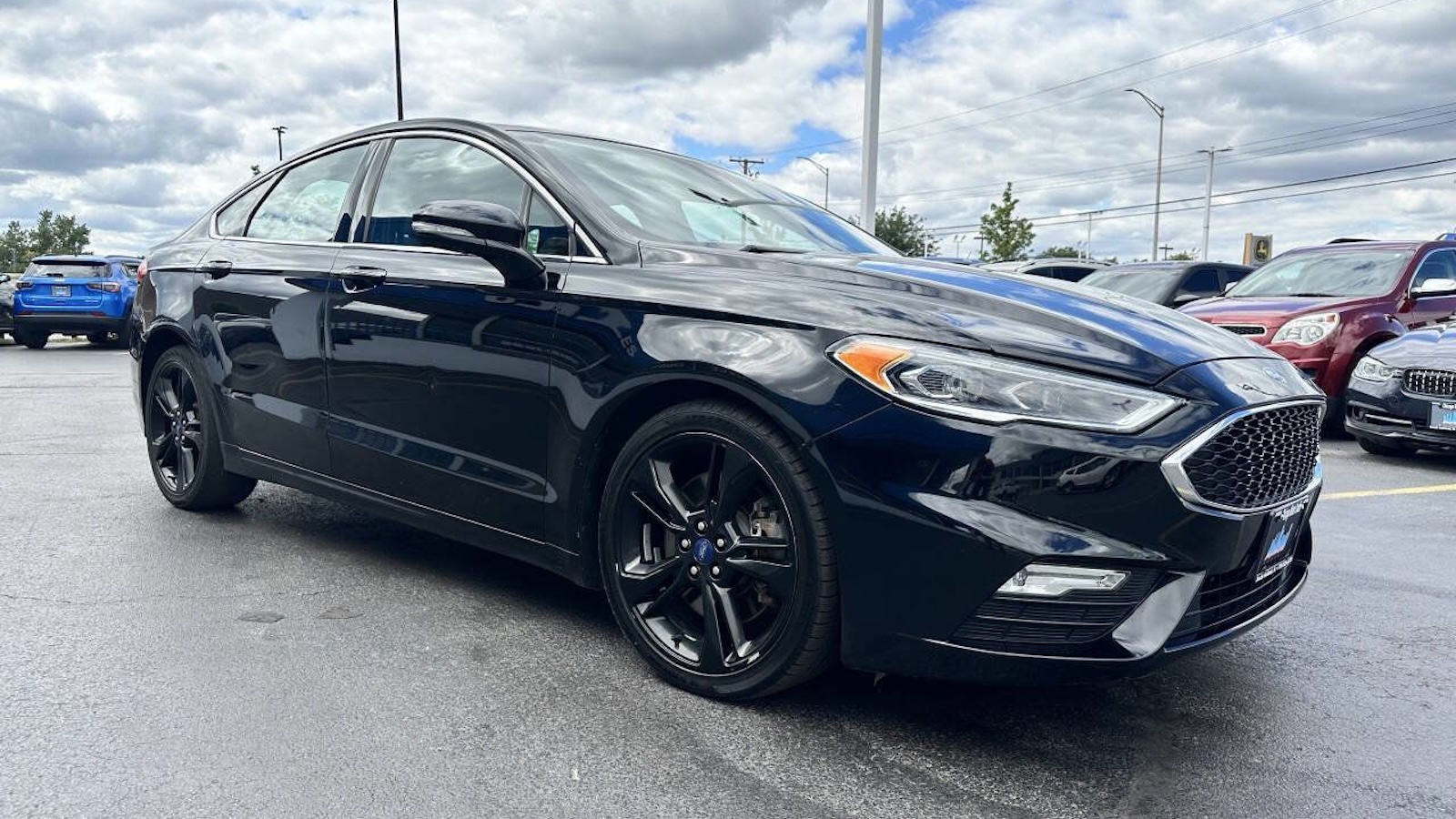
If you’re the type of person to sort your used car listing by cheapest first, there are Fusion Sports out there for you, too. Check out this mall goth-spec 2018 model with nigh-on 139,000 miles on the clock, up for sale in Illinois for a mere $10,950. That’s not a lot of dough for a 325-horsepower family sedan with Apple CarPlay, sueded upholstery, and LED headlights.
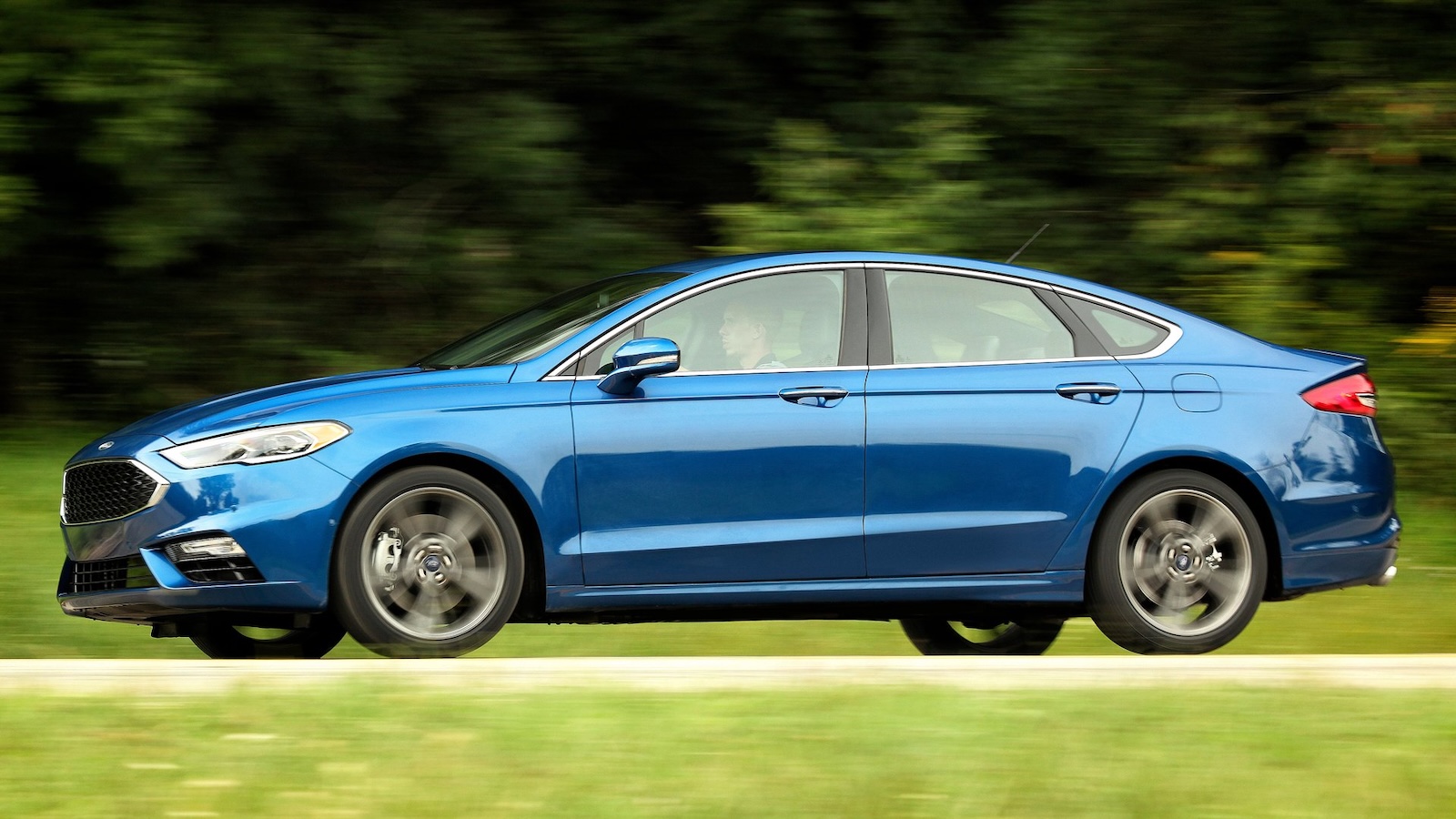
That being said, the oldest second-generation Ford Fusion Sport examples are knocking on the door of a decade old, so what can you expect to go wrong? Well, some models built in 2016 and on New Year’s Day 2017 had valve guide issues, resulting in excessive oil consumption. According to a technical service bulletin, the solution is to replace one or both cylinder heads. While not every Fusion Sport built in 2016 is affected, it’s worth checking for smoke and oil consumption. However, there really isn’t much that goes wrong on these cars beyond that. Battery drain issues caused by cycling CD players were largely fixed by a software update. You might encounter a leaky oil pan that’s fixable with a new part, and that’s about it. Not bad, all things considered.
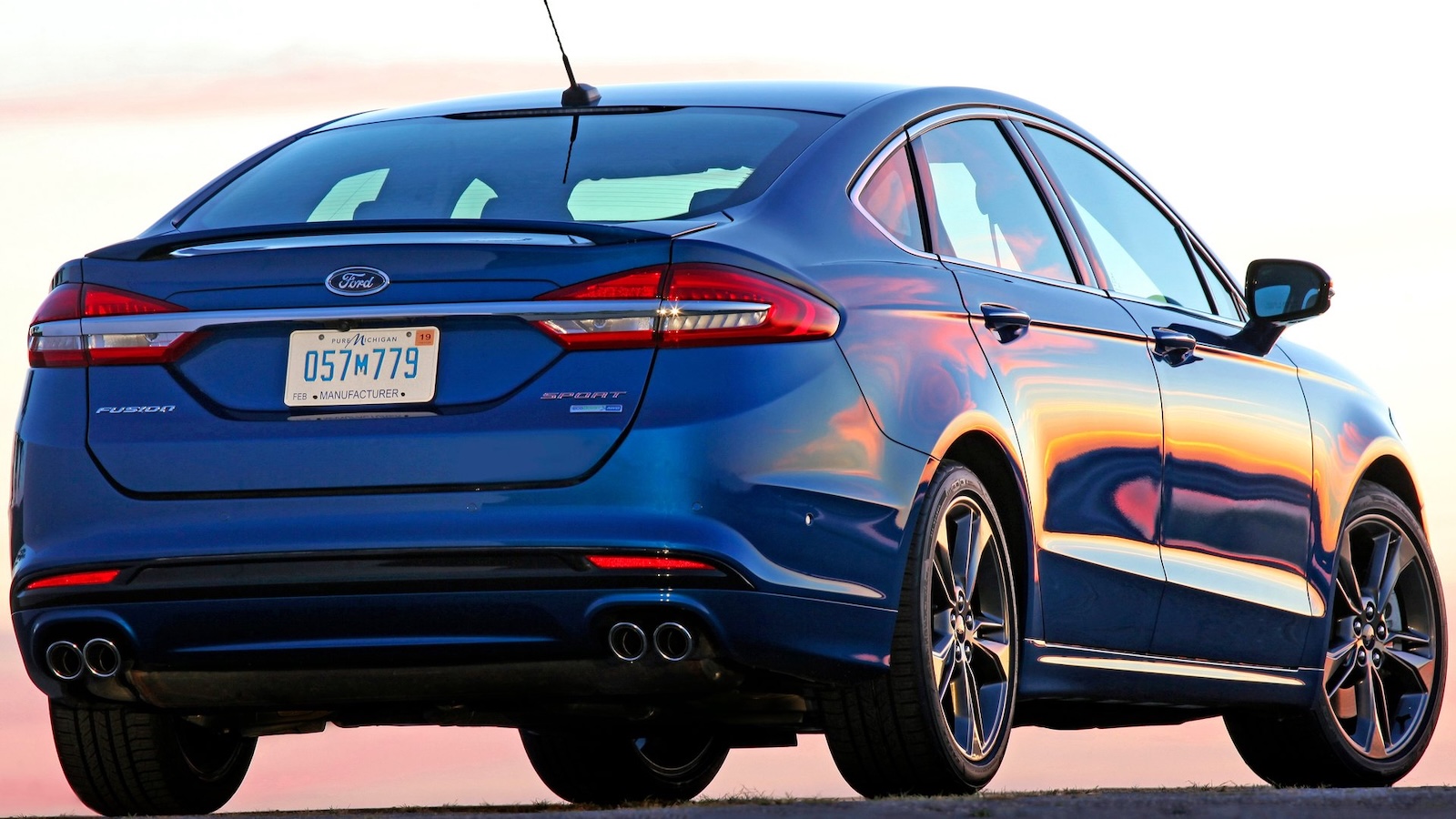
If you’re shopping for a second-hand family car and want one with some kick to it, why not check out a second-generation Ford Fusion Sport? It’s quick, roomy, well-equipped, and generally seem fairly stout. Sure, it won’t hang with a sport compact car in the corners, but it’ll give you a thrill when you’re hammering down an on-ramp.
Top graphic image: Ford
Support our mission of championing car culture by becoming an Official Autopian Member.

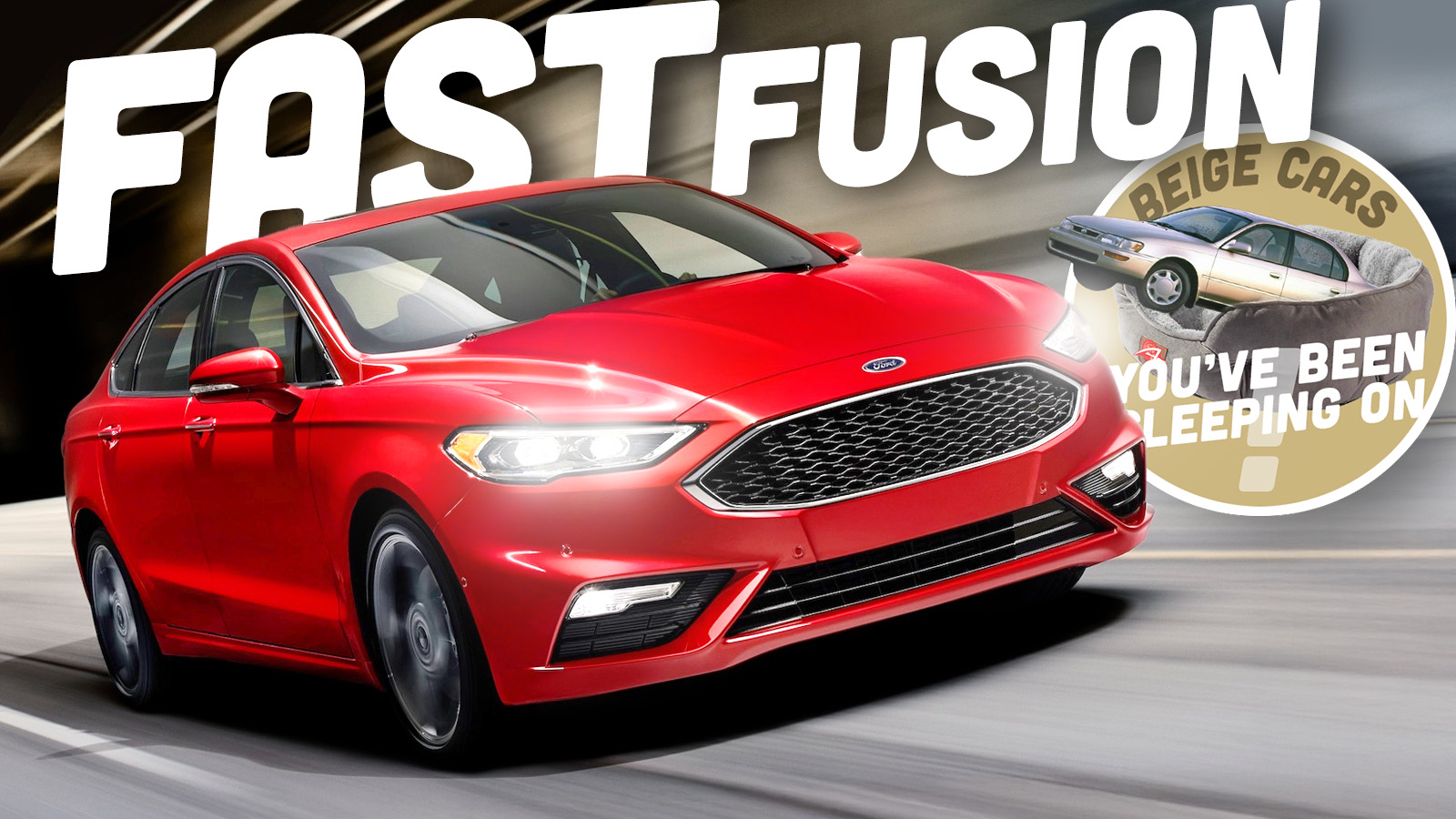






My dad and I have identical 2017 Fusion Sports. He has slightly less miles than mine but his was made May 2017 and mine was made January 2017. His has had far less problems than mine. On mine, the engine oil pan, transmission, and PTU have been leaking since 2017. One time I found a huge coating of oil underneath the entire right side of the vehicle, dripping onto my garage. I never found out what it was from because I have changed the transmission, PTU, and rear diff oil and none of them were ever low. I’ve had to update the firmware on the driver and passenger door modules – because the front side windows would roll down by themselves on the freeway or when I rolled them up, they’d roll back down. My sunroof glass flew off the adhesive as well on the freeway. I am also running my own tune on it, so it is running low to mid 12s in the 1/4 mile with just the tune. It needed new rear brake pads at about 50k miles, fronts look new. These are definitely sleeper cars that were sold at a discount brand new (I bought mine brand new for $34k out the door). Super quiet and supple ride. In Sport mode, I can keep up
What’s even more of a sleeper was the 2017-2020 Lincoln MKZ 3.0. The MKZ is the sister car to the Fusion. My Fusion Sport’s belly pan has the LINCOLN logo embossed in it. I bought a sunroof glass off a totaled 2013 MKZ from eBay that fit right into my 2017 Fusion Sport – they are identical parts. The MKZ 3.0 engine is basically the 2.7 with more displacement and bigger turbos. This 3.0 was NOT marketed as EcoBoost because Lincoln wanted to set themselves away from the commoner EcoBoost. But we all know how that turned out as the 2020-up Explorer ST, Bronco Raptor, Ranger Raptor, etc… switched to the 3.0 EcoBoost but went to a wet rubber oil pump belt instead of the chain found on the early 2017-2020 3.0 engines.
The folks with turbo swapped Fusion Sports (running the MKZ 3.0 turbos) and bigger intercoolers, and even MKZ 3.0’s with modified turbos and bigger intercoolers, are still in the high 11’s in the 1/4 mile. Easily outpaced by modern EVs in the same class.
What happened to these cars? It feels like they were everywhere and then nowhere overnight.
Was there a Republican “Cash for Clunkers” I missed that got people out of midsize sedans in exchange for 84 months of truck debt?
Fusion Sports were rare to see everywhere, and even rarer are MKZ 3.0’s and most of the MKZ 3.0s I’ve seen were driven by older women. I told one of them at the gas station that her car is a unicorn and to never sell it. She chuckled at that.
I just meant the Fusion and MKZ in general.
When we bought my ’17 Accord V6, I wish I had known about these. I only cross-shopped with a Golf GTI. I might have bought one of these had I tried it. And I do think these Fusions looked handsome.
The Accord is a bit slower on the 0-60 run, but it’s no slouch.
The AWD in the Ford make it a lot more tractable. If you plant your foot down in the Accord from a standstill, both front tires will be making smoke and if you keep it planted, you’ll get a bit more of wheelspin going into 2nd and get a chirp when it hits 3rd. Admittedly, this is on all-season tires. And in the interest of longevity, it’s been quite a while since I
Not mentioned in this article is fuel economy or whether they wanted/needed to run on high-octane fuel. The Accord is perfectly happy on regular and gets upper 30s mpg on the freeway. Sometimes 40. But pretty thirsty around town. And it has not required anything beyond routine maintenance over 70K miles. I am not unhappy with it.
Same problems the 10-19 SHO had; crappy transmission and front-wheel drive biased PTU. The reviews also found the 325 hp claim somewhat dubious as it was getting smoked by cars with considerably less hp. I suspect it can be tuned like the SHO and gain about 80-100 horsepower for not a lot of money.
The 6F55 in the SHO, Explorer Sport, MKZ 3.0, and Fusion Sport can take 500+ ft-lb of torque and a lot of abuse. Similar/same as the 6T80 that GM used in the Malibu with the 2.0 LTG. Overall, it is not the 6F35 that broke if you looked at it wrong.
My 2014 SHO was running 12.4 with just a tune. The Fusion Sport with an early tune (before HPTuners unlocked all of the parameters like 3 years later) was a few tenths off tune-only.
The 3.5L EcoBoost has a lot more torque off the line than the 2.7 EcoBoost. My data showed like a 100 ft-lb difference at under 3000 RPM. While I could get 1.8 60′ times on all-season street tires for both cars, the SHO didn’t need that much brake boosting to do it and it would pull 1.8x 60′ times back to back to back like 6 times in a row no cool down, with each run being 12.4x – overall it was very consistent. Transmission was fine.
The factory shift schedule and tuning on the Fusion Sport left a lot to be desired and the first thing I noticed was the lack of low end torque with that 2.7 EcoBoost.
I’ve test driven the 2020-up Explorer ST and the 3.0 isn’t that much better, but the 10R60 first gear ratio is extremely steep to compensate/mask this lack of low end torque.
Shh, this is my guilty pleasure that I know is gonna be even cheaper and with the right tune for the engine and transmission, I think it’ll only get better.
I had a 2014 Fusion with the 1.6 turbo and manual transmission. Certainly not a sports sedan, but definitely an enjoyable drive for a mainstream family sedan. If Ford fitted the Sport with a manual and improved the steering feel, it would’ve been a much closer successor to the original Taurus SHO or SVT Contour.
I had one of these for 3 years. That engine gave you plenty of passing power but it was let down by a lifeless transmission so it never felt as quick as the numbers suggest. A budget BMW it was not.
Handling was pretty decent. The fact they forced you to 19″ wheels made it unnecessarily harsh though. Should have swapped something with more sidewall on there
I mean, if you really wanted something more fun, forget the Fusion and take it’s fancier cousin, the MKZ.
They put the 3.0 Ecoboost into that and it could crank out about 400 HP. Yes, they cost a bit more, but really, not THAT much more.
Plus, you’d be flying far lower under the radar. Nobody is going to think grampa in his cream colored Lincoln is going to be hauling their wrinkly old ass at anything faster than a walking pace.
Granted, it’s not an athlete, but most people drive trucks and SUVs; dynamically, a sedan would still be far more enjoyable, even if a bit marshmallowy.
If you’re really into it, throw some fancy suspension and tires at it. Could be interesting…
I test drove one of these when I worked at the Blue Oval because on paper and in reviews it sounded perfect. While shockingly quick from a launch to highway speeds, the steering was deader than my hopes and dreams of being a pro race car driver, and I couldn’t fit in one with a sunroof.
As much as I loathe many of the Chinese EV makers for pushing Tesla-esqe interiors with no buttons and huge screens, there is one thing I begrudgingly give them credit for: widespread adoption of active damping even with conventional coil-sprung suspension.
One of the BYD wagons offers CDC with a total retail price of 120K RMB (17K USD); go up a bit in pricing (>25K) and air suspension becomes standard equipment. Now even Honda and Toyota are offering cars with CDC through their joint-venture models.
I tested one of these back when they came out. It was only “Sport” in a straight line. The 2.7L turbo engine made it more nose heavy than you’d expect. Ended up with a 2018 Mazda 6 turbo instead.
Somehow there are only 37 of these for sale nationwide and they are all 2017s…
Interestingly, there is one that has base everything spec as though it’s a Fusion S with cloth, tiny screen, crappier gauges, etc. Weird spec.
“If you’re the type of person to sort your used car listing by cheapest first”
Whatever in the world gave you that idea?
I’ve always liked your username.
“If you’re the type of person to sort your used car listing by cheapest first,…”
Wait, are there legitimately people doing anything other than this?? Not suggesting you have to buy the cheapest, but what chaotic process is everyone else using to at least sort through options? Filter for applicable models and power trains, area, upper price limits, sort low to high and crack on.
I occasionally sort by lowest mileage to get a quick idea of a nice example’s value.
They also look a tiny bit like the last Australian-built Ford Falcon, which is a good thing. On the other hand I’d have to deal with the daily disappointment that it isn’t a Falcon.
From the styling standpoint, you’ve got it wrong way round. The FG X Falcon looks a tiny bit like the Fusion, since the Fusion came out a year before the FG X Falcon. In terms of driving, yeah the Falcon will run rings around the Fusion.